Inventions
Radioactive Vending Machine Tokens
Sometimes vendors would like to sell relatively high-value items in vending machines. That is, merchandise worth more than a candy bar. Nowadays that's not a problem because there's technology that can scan paper currency or read credit cards, making larger transactions possible.But back in the 1960s, vending machines relied on coins for payment, so selling high-value merchandise wasn't practical. Especially since the machines could only measure weight, shape, and size to determine if the coins were real — and these characteristics are easy to fake with low-value blanks.
The British printing company Thomas de la Rue devised a solution: radioactive vending machine tokens.
Its researchers realized it would be possible to create tokens made out of layers of radioactive materials such as uranium and carbon14. These tokens would emit unique radioactive signatures that could be measured by Geiger counters inside a vending machine. Such tokens wouldn't be easy to forge. The company patented this idea in 1967.
I'm not aware that any vending machines accepting radioactive tokens were ever put into to use.
I imagine they would have suffered from the same problem that plagued other efforts to put radiation to practical, everyday use — such as the radioactive golf balls we posted about a few months ago (the radiation made it possible to find the balls if lost). The radiation from one token (or golf ball) wasn't a health hazard, but if a bunch of them were stored together, then the radiation did become a problem.
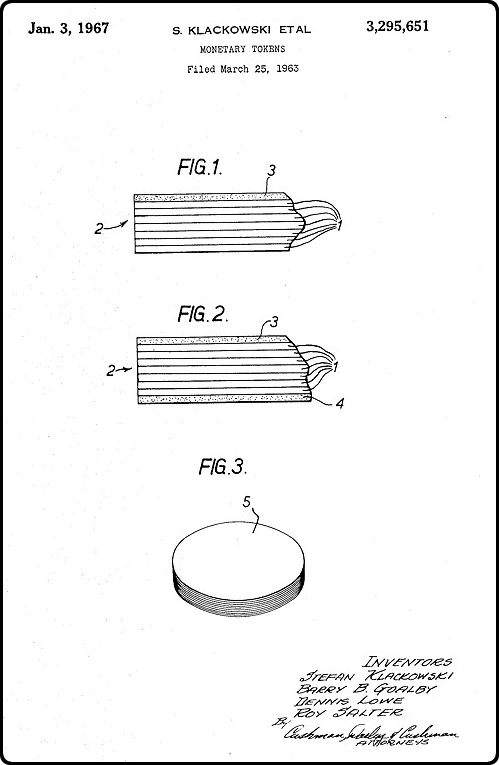
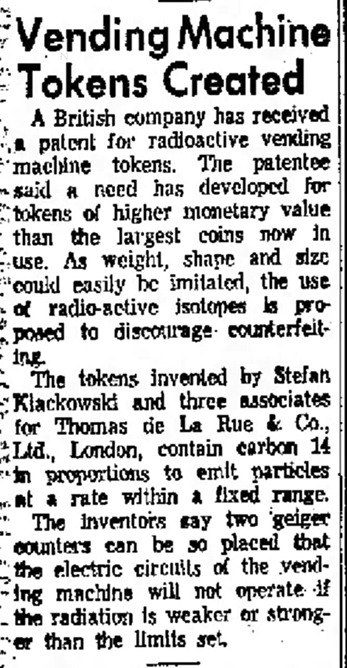
Nashua Telegraph - Jan 11, 1967
Posted By: Alex - Sun Mar 08, 2020 -
Comments (3)
Category: Inventions, Patents, Atomic Power and Other Nuclear Matters, 1960s
Monkey jockeys race greyhounds
In the early 1930s, a new feature was introduced at some greyhound races: monkey jockeys. Apparently the crowds loved the idea. The problem was, the monkeys had trouble staying on the backs of the greyhounds. Animal trainer Rennie Renfro came up with a solution — a special harness that would tie the monkey onto the back of the dog. Renfro patented his invention in 1933.It probably made him some money, because I can find descriptions of races with monkey jockeys for decades afterwards.
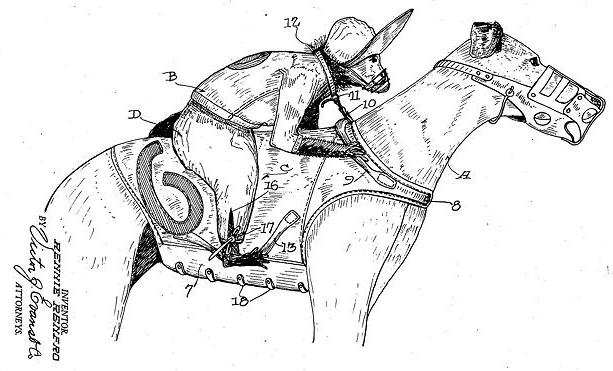
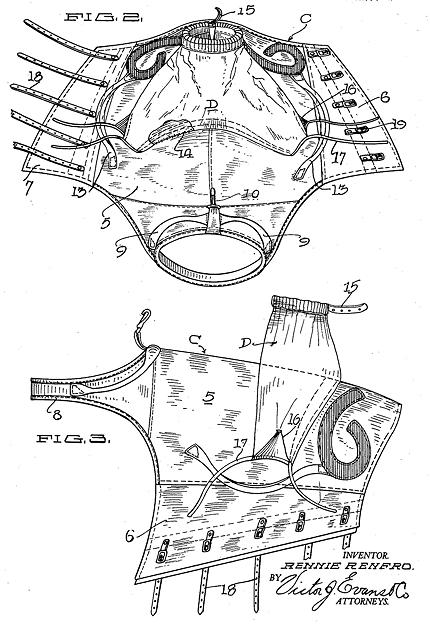
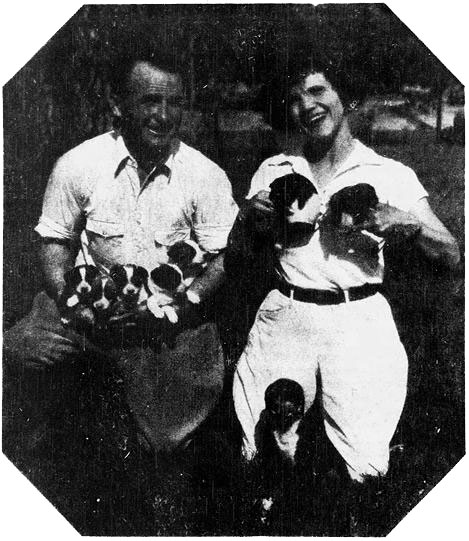
Rennie Renfro (left) and his wife
St. Louis Post Dispatch - July 2, 1933
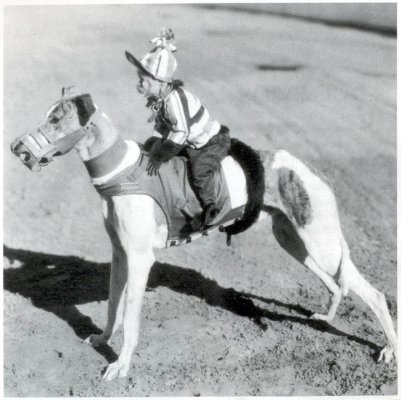
image source: Greyhound Articles Online
Posted By: Alex - Sun Mar 01, 2020 -
Comments (0)
Category: Inventions, Patents, Sports, 1930s
House Music
Posted By: Paul - Thu Feb 27, 2020 -
Comments (1)
Category: Eccentrics, Inventions, Music
The Nothing Box
A gag gift from the early 1960s, created by inventor Jack Hurlbut: "When a button is pressed the lights flash, the dials spin, the switches turn—and nothing happens."It briefly made headlines in 1965 when a man took one with him on a flight, and was promptly detained on the suspicion that he was carrying a bomb.
The Nothing Box is another one of those vintage curiosities that seem to have completely disappeared. I can't find any evidence that one of them still exists.
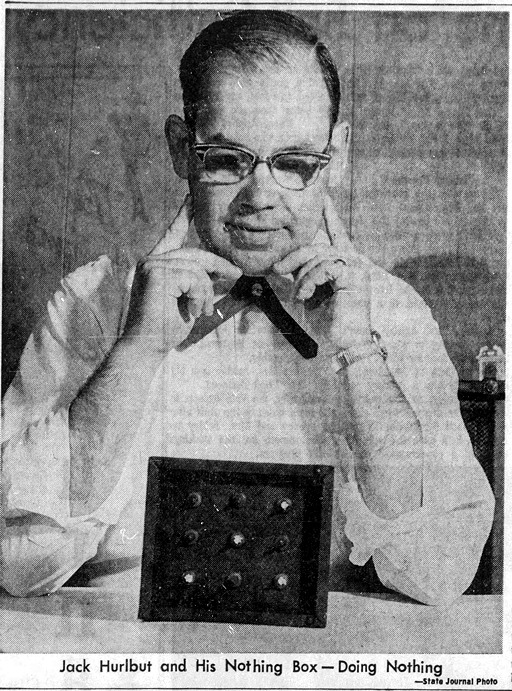
Wisconsin State Journal - May 18, 1964
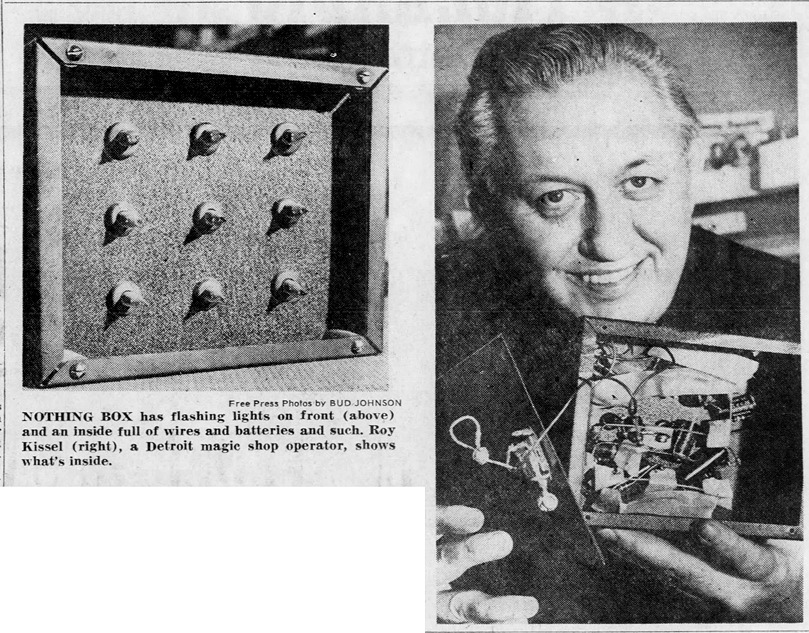
Detroit Free Press - Dec 28, 1965
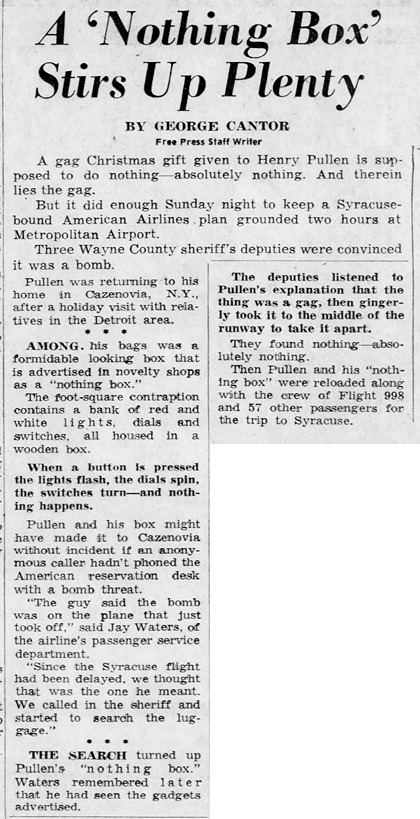
Detroit Free Press - Dec 28, 1965
Posted By: Alex - Fri Feb 21, 2020 -
Comments (4)
Category: Inventions, 1960s
Advertising Chairs
Back in 2018, Paul posted about an "advertising chair" patented in 1910. As a person rocked in it, advertisements scrolled in the armrests.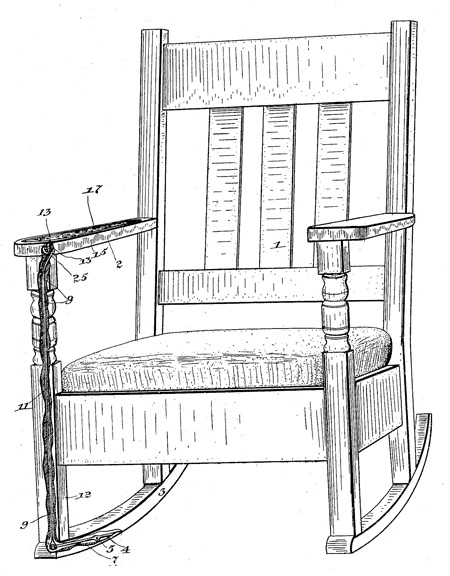
Patent No. 958,793 (1910)
I recently discovered that this invention wasn't a one-off. In the early twentieth century, inventors were actively competing to perfect advertising chairs and inflict them on the public. I was able to find four other advertising chair patents (and there's probably even more than this). To my untrained eye, they all look very similar, but evidently they were different enough to each get their own patent.
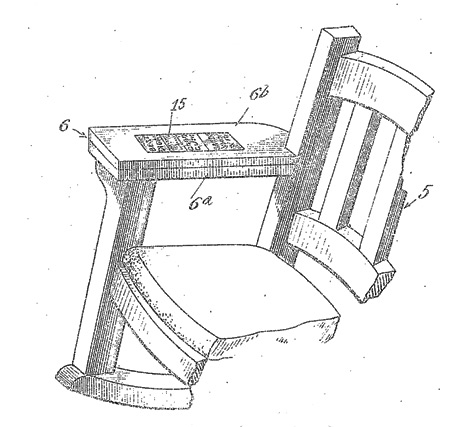
Patent No. 934,856 (1909)
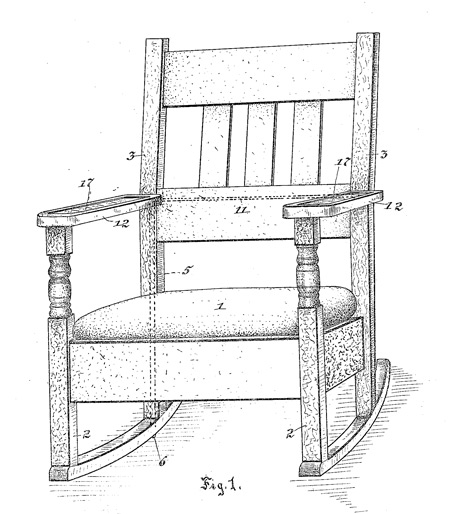
Patent No. 993,397 (1911)
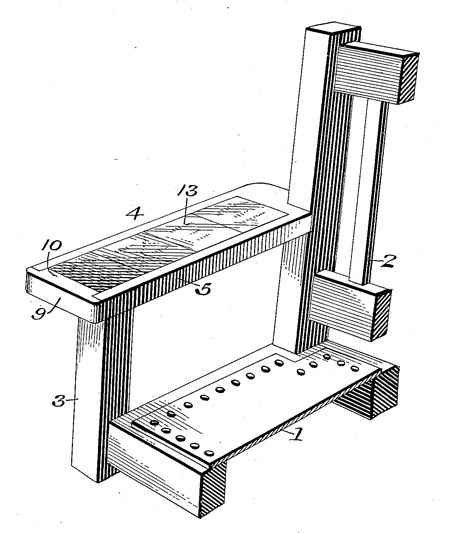
Patent No. 1,094,154 (1914)
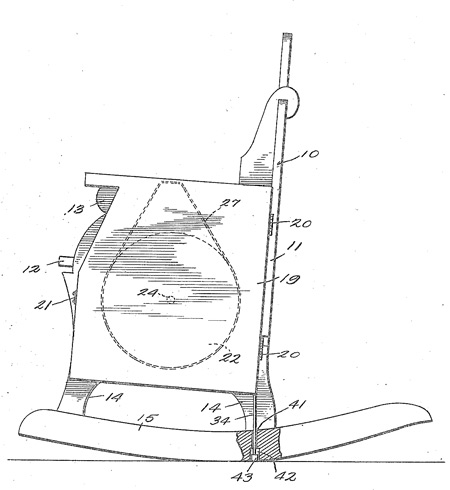
Patent No. 1,441,911 (1923)
A newspaper search brought up an 1895 article that described advertising chairs as the "latest in advertising." It also explained that the concept was to put these chairs in various places where there were captive audiences, such as "hotel lobbies, public libraries, depots and in fact in all places where tired humanity is used to taking a quiet little rest during the day."
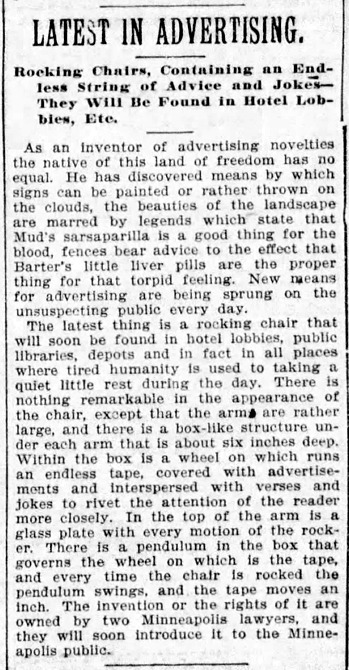
Minneapolis Star Tribune (Dec 8, 1895)
But although entrepreneurs may have been keen to build advertising chairs, the public was evidently far less enthusiastic about them. An editorial in the Kansas City Journal (reprinted in Printer's Ink magazine - Jan 2, 1901) described an advertising chair as "comfortable enough physically, but mentally it is a torture... Just who invented the advertising chair is not known. He has no reason to be proud."
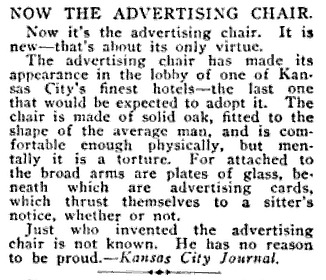
There must have been a number of these advertising chairs in existence, but I'm unable to find any surviving examples of them. Searching eBay, for instance, only pulls up chairs with advertisements printed on them.
Posted By: Alex - Tue Feb 18, 2020 -
Comments (4)
Category: Furniture, Inventions, Patents, Advertising
Shoe Gongs
Anthony Faranda of Yonkers, NY worried that children didn't like wearing rubber-soled shoes because they made no noise when walking on a pavement. So, he invented a shoe gong. Or, as he called it, a "footwear actuated noise maker." He patented it in 1957.It was a disc and clapper that could be worn over shoes. He explained: "The arrangement is such that upon normal walking steps or running strides the clapper is activated to make noise and thereby promote the interest of children in wearing shoes with soles that do not make an audible sound in engaging firm or rigid surfaces."
Maybe kids would have liked these, but not, I imagine, their parents.
He assigned the patent to the NY advertising agency McCann-Erickson. It's unclear what plans they might have had for these things.
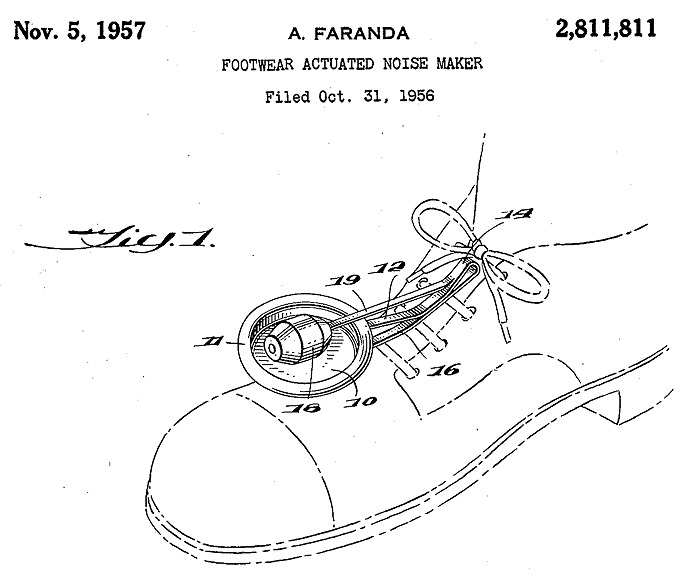
Posted By: Alex - Sun Feb 16, 2020 -
Comments (2)
Category: Inventions, Patents, Shoes, 1950s
Donkey Bike
Posted By: Paul - Fri Feb 14, 2020 -
Comments (1)
Category: Bicycles and Other Human-powered Vehicles, Inventions, 1960s
Rubber Snow Mitts
There's a good reason these never caught on: I'm sure the wearer's hands were as clammy as dead fish within seconds of wearing them.Source.
Even the modern version that appears next has some breathable fabric, and is specially for work, not snowball fights.
Source.
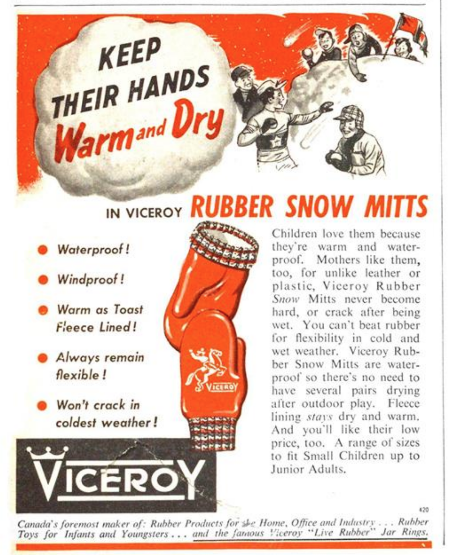
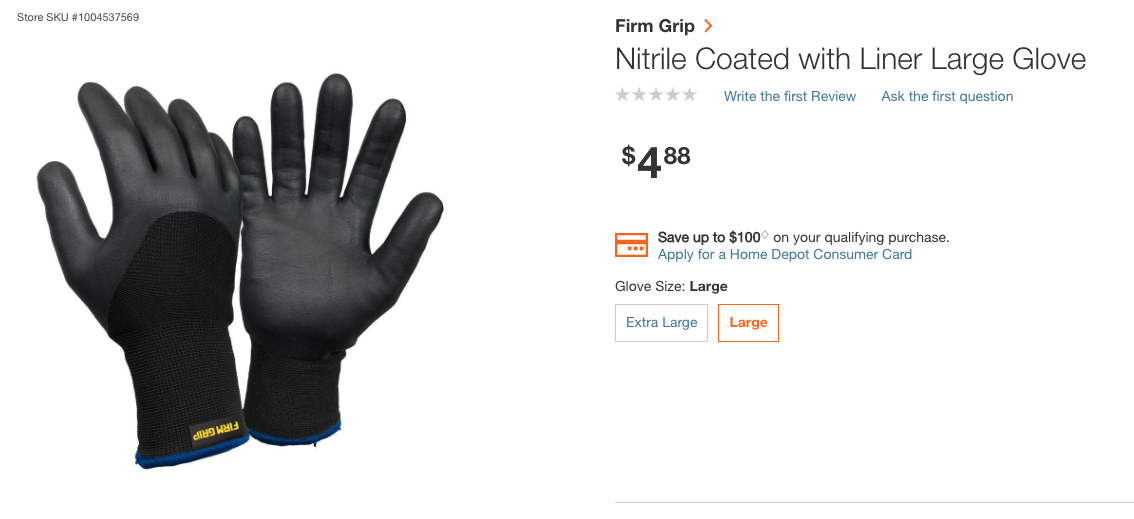
Posted By: Paul - Wed Feb 12, 2020 -
Comments (0)
Category: Inventions, Seasonal, Pain, Self-inflicted and Otherwise, Skin and Skin Conditions
Throwing Animals for Taking Death Leaps
Circus proprietor Edward Wulff patented a curious device in 1904. It was an apparatus that catapulted animals upwards. It had the rather alarming title, "Throwing Animals For Taking Death Leaps" (Patent No. 774,017). Wulff claimed it could throw "horses, elephants, monkeys, &c.." The patent illustration shows a horse, so these were evidently the primary animal being thrown.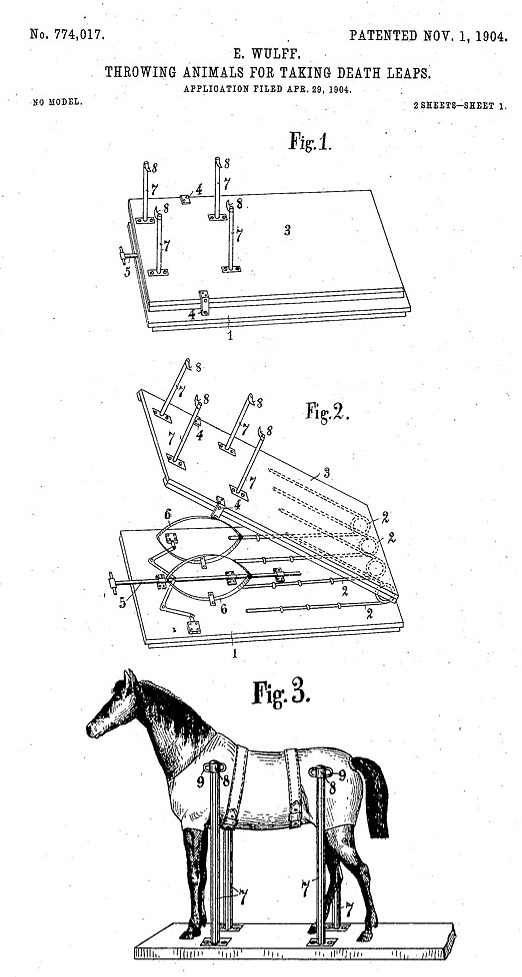
The device was relatively straight-forward. The animals were placed in a harness that held them on top of a spring-powered platform. The release of the springs then flung the animals upwards. Wulff emphasized that his apparatus was designed, via the harness, to place the projecting force on the full body of the animal, rather than just their legs. He seemed to feel that this was a safer, more humane method of throwing animals.
Wulff explained that this device was designed to be used as part of a circus stunt known as "a death leap or so-called 'salto-mortale.'" But he didn't offer any further explanation about the nature of the stunt or how far the animals were flung. And I couldn't locate any descriptions of this stunt in other sources. All the references to a 'death leap' stunt that I came across involved human trapeze artists, not animals. So I was about to conclude that the stunt would have to remain a mystery until I got the idea to check if Wulff had filed the patent in any other countries. Sure enough, there was a British version of the patent, and while its text was almost identical, it had a different title that explained the nature of the stunt:
So Wullf's apparatus was evidently designed to somersault animals. Not simply to catapult them upwards. This made me recall something I posted here on WU back in 2012. It was a brief item that appeared on the front page of the Washington Post's 'Miscellany Section' on April 21, 1907, titled 'Horse Can Turn Somersaults.' At the time, this random reference to a somersaulting horse totally baffled me. I even suspected it was a hoax. But now it makes sense. It must have been a circus stunt. Perhaps it even made use of Wulff's invention. I can't find any evidence that Wulff's circus was in Boston in April 1907, but it was in New York in December of that year.
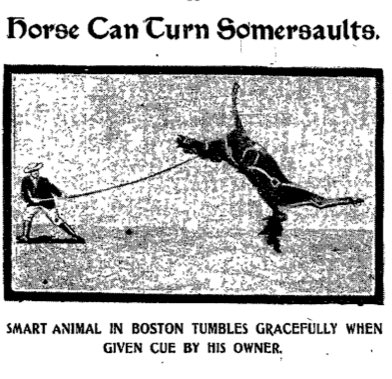
Wulff, it turns out, was the author of another odd patent, granted to him in 1887. The patent was titled, "Means and apparatus for propelling and guiding balloons." He intended to use birds such as "eagles, vultures, condors, &c" to guide balloons. The birds would be attached to the balloon by a harness, and an aeronaut would then force them to fly in the desired direction, thereby propelling the balloon.
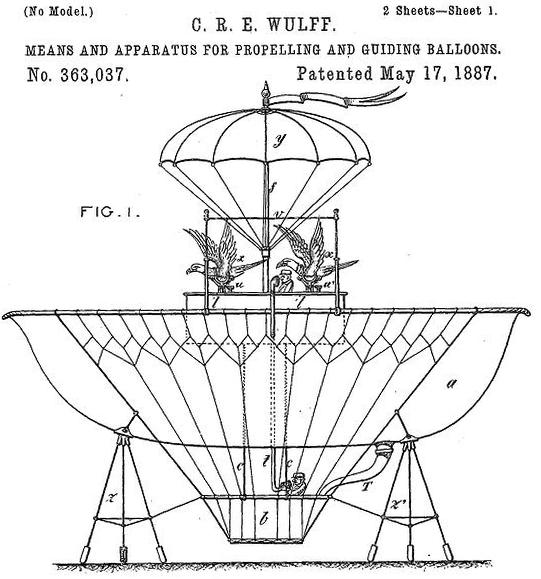
This patent has received quite a bit of attention, because there's a lot of interest in the history of early attempts at flying machines. Knowing that Wulff was a circus proprietor, I wonder if he intended his eagle-guided balloon to be used as part of a circus act, rather than as a practical flying machine.
Posted By: Alex - Sun Feb 09, 2020 -
Comments (6)
Category: Animals, Inventions, Patents, ShowBiz, 1900s
Lew Lehr’s Inventions
His Wikipedia page.
Posted By: Paul - Sun Feb 09, 2020 -
Comments (1)
Category: Inventions, Chindogu, Movies, Twentieth Century

| Who We Are |
|---|
| Alex Boese Alex is the creator and curator of the Museum of Hoaxes. He's also the author of various weird, non-fiction, science-themed books such as Elephants on Acid and Psychedelic Apes. Paul Di Filippo Paul has been paid to put weird ideas into fictional form for over thirty years, in his career as a noted science fiction writer. He has recently begun blogging on many curious topics with three fellow writers at The Inferior 4+1. Contact Us |




